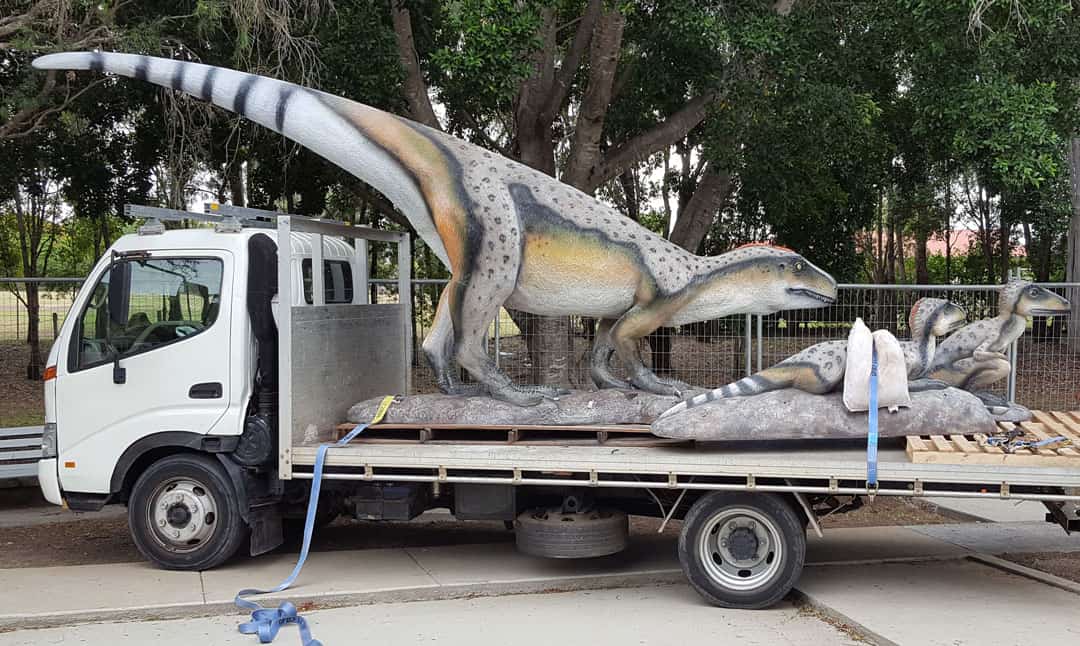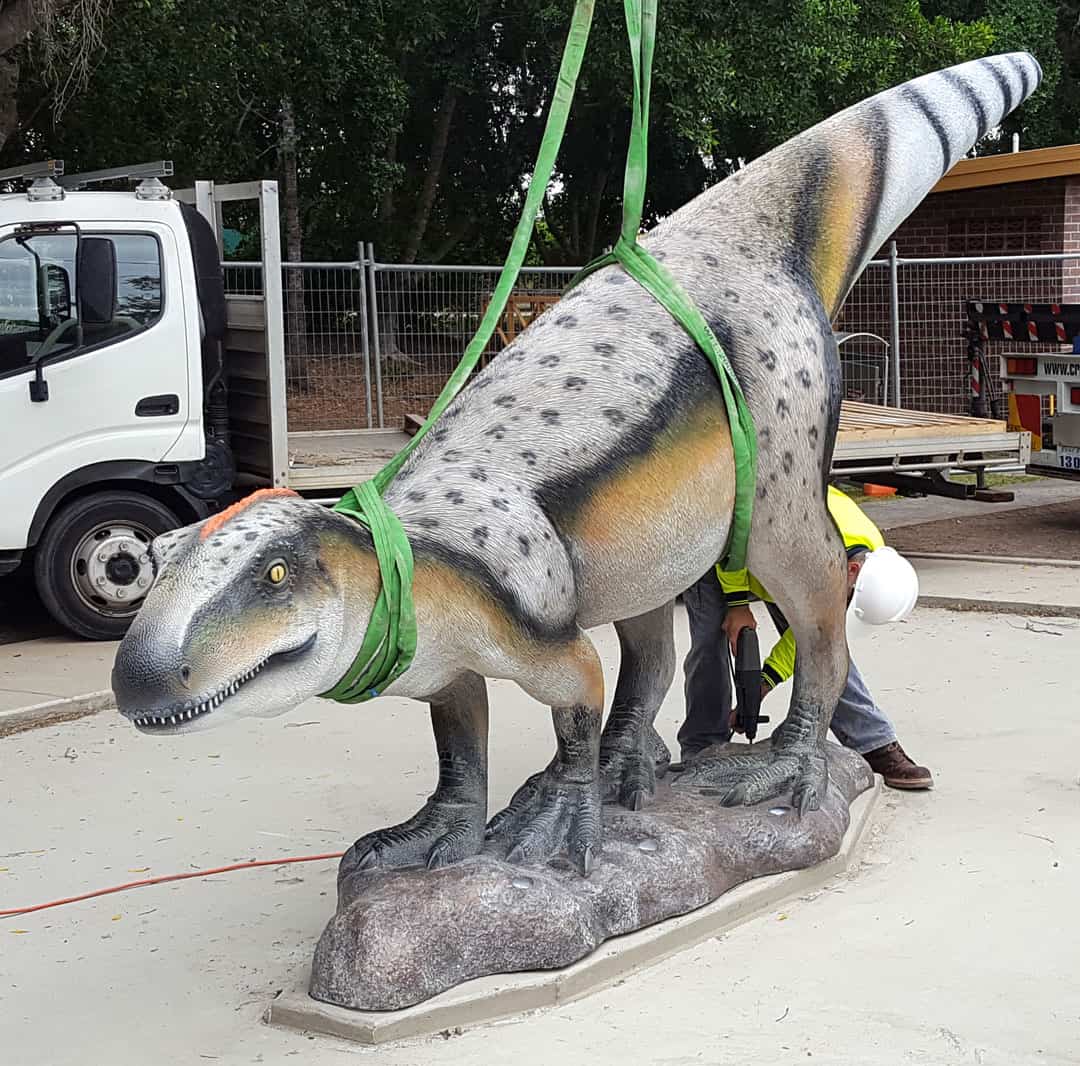After more than 165 million years meat eating dinosaurs have returned to Rosewood in the shape of a new replica life-size display in John Street
The idea for the project in Johnston Park was first proposed in 2016.
Ipswich City Council moved into the final phase of the installation of one adult and two juvenile dinosaurs this week.
Dinosaur footprint fossils were discovered in underground coalmines early last century and gained some notoriety in a number of newspaper stories published in the 1930s and 1940s.
Council previously engaged Dr Anthony Romilio from the University of Queensland to confirm the shape and size based on the dinosaurs based on the footprints located in the collieries and similar ones in elsewhere in Australia and Argentina.

Dinosaurs arrive on truck ready for placement at their final destination in Rosewood.
The Queensland Times reported on 13 September 1934 a colliery in Lanefield had clearly visible imprints of historic monsters. Dr J J Bradfield was quoted at a meeting in Ipswich that various swamps were near Rosewood, Harrisville and extended to Grandchester. This area was known to geologists as Walloon Lake over which huge dinosaurs roamed.
The Courier-Mail published similar information on 23 July 1949 adding that dinosaurs moved over the surface of the swamp on plaster-like mud, soft enough to take good impressions of their feet yet firm enough to prevent them sinking.
The installation includes three fibreglass dinosaurs, one egg nest, one femur bone and the cast of a dinosaur footprint.
Contrator Natureworks was commissioned to build the replica creatures and previously worked on council’s bilby display at the Ipswich Nature Centre.

A truck mounted crane carefully lowers the adult 500 kilogram dinosaur onto its 600mm deep foundation in Johnston Park
About the Display
This is a reconstruction of a theropod (‘meat-eater’) dinosaur that lived in the Rosewood area during the Middle Jurassic, more than 165 million years ago. Evidence for the occurrence of Rosewood dinosaurs and in neighbouring areas (Dinmore, Oakey) comes not in the form of fossil bones but rather fossilised footprints.
The Rosewood fossils are contained in rock located below ground (up to 140 metres below the surface) and were discovered in the 1930s-1990s during tunnel-mining for coal. Nearly a dozen Rosewood underground mines are known to have contained dinosaur footprints, most notably are the Lanefield, Westvale, Oakleigh, Roughrigg collieries. While all are closed, part of structural building for the Roughrigg colliery still stands.
Interestingly, these fossil dinosaur footprints have been found not as depressions into the rock but as footprint ‘infill’. The impressions left by the dinosaurs were made on thick mats of fallen leaf debris, which was later covered by sediment-ladened water. Over time these layers became rock. The vegetation debris became coal, and when removal during tunnel-mining, the footprint infills became revealed along the ceiling of the mines.
Theropod footprints are the most common dinosaur fossil in the Rosewood area and may reflect that Rosewood’s ancient swamp settings were a preferred environment for these meat-eater dinosaurs. These fossils are referrable to the Eubrontes dinosaur-footprint-name, which have three toe impressions and resemble massive bird tracks up to 50 cm in length that were formed by animals with legs over 2-metres long. In one Rosewood mine, a 5-metre-long trackway has also been observed, likely formed by a dinosaur that was walking.
Additionally, footprints from ornithopod dinosaurs are also known from Rosewood. These track-makers were two-legged plant-eaters but of much smaller size (footprints up to 20 cm in length) and are much less common than other fossil tracks.


4.5
5